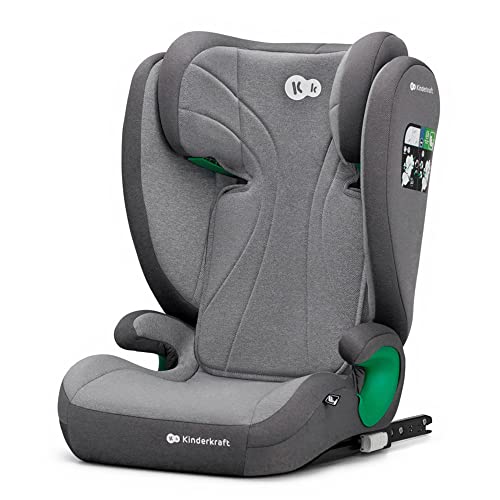12 Companies Leading The Way In Prams Newborns
The Comprehensive Guide to Choosing the Right Pram for Newborns
The arrival of a newborn brings both immense joy and a variety of decisions that moms and dads must browse. Among the vital purchases is picking the right pram, which not just ensures the baby's security however also supplies benefit for parents. This guide aims to provide an extensive check out choosing the suitable pram for newborns, talking about different types, features, security factors to consider, and upkeep pointers.
Comprehending the Types of Prams
Prams vary extensively in style and functionality, which can be frustrating for brand-new moms and dads. Here's a breakdown of the most common types of prams readily available in the market:
Type of Pram
Description
Pros
Cons
Traditional Prams
Developed for infants, these prams generally have a deep bassinet.
Comfy for newborns, Safe for sleeping.
Bulky and heavy, Hard to maneuver in tight areas.
Travel Systems
A combination of a vehicle seat and a stroller, permitting easy transition in between vehicle and stroller.
Flexible and convenient, Cost-effective.
Might be much heavier than standalone strollers, Not all elements are suitable for newborns.
Lightweight Strollers
Compact and simple to navigate, these are ideal for parents on the go.
Portable and simple to utilize, Generally more budget-friendly.
Less cushioning, May not recline fully for newborns.
Convertible Strollers
Strollers that can adapt from a carrycot for newborns to a young child stroller.
Multi-functional and long-lasting, Adjustable setups.
Can be expensive, May require more upkeep.
All-Terrain Strollers
Developed for rough terrains, these strollers normally include bigger wheels.
Durable for outdoor usage, Stable on numerous surfaces.
Heavier and bulkier, Can be tough to steer indoors.
Secret Features to Consider
When picking a pram for newborns, numerous functions can significantly affect use and safety. Here are necessary functions to bear in mind:
- Safety Harnesses: Look for a pram that consists of a five-point security harness to make sure the baby remains safe while in transit.
- Reclining Seat: A completely reclining seat enables newborns to lie flat, which is vital for their spine and respiratory health.
- Suspension System: A good suspension system provides a smoother ride, important for the delicate bodies of newborns.
- Brake System: Ensure the pram has a trustworthy brake system to prevent mishaps. Hand brakes or foot brakes can be reliable choices.
- Storage Space: Consider a pram with sufficient storage space for diaper bags, shopping, or other essentials.
- Weight and Foldability: Choosing a light-weight option that folds quickly is vital for convenience, particularly for public transport.
Security Considerations
Prioritizing security is vital when it comes to prams for newborns. Here are crucial security ideas to guarantee the well-being of your baby:
- Check for Stability: Make sure the pram stays steady when fixed. A broad base can provide increased stability.
- Prevent Overloading: Only location items suggested by the maker in the storage basket; excess weight can lead to tipping.
- Regular Maintenance: Inspect the wheels, brakes, and harness systems regularly to ensure they operate properly.
- Buckle Up: Always use the safety belt, even for quick journeys, to prevent the baby from slipping or falling out.
- Expect Age Recommendations: Follow the manufacturer's standards relating to weight limits and age recommendations for safety.
Maintenance Tips
Looking after a pram guarantees its longevity and safety for your newborn. Here are essential maintenance suggestions:
- Regular Cleaning: Wipe down the pram frame and wash fabrics according to maker directions to keep it hygienic.
- Inspect the Wheels: Check wheels for damage and clean them routinely to prevent blocked movement.
- Examine Folding Mechanism: Ensure the folding mechanism operates smoothly without sticking or jamming.
- Lubricate Moving Parts: Apply the appropriate lube to moving parts to guarantee quiet and smooth operation.
- Shop Properly: When not in use, save the pram in a dry area to prevent rust and maintain fabric integrity.
Regularly Asked Questions (FAQs)
1. For how long can a baby be in a pram?
For newborns, it is generally recommended to limit uninterrupted time in a pram to about 1-2 hours to avoid problems with development and blood circulation.
2. Which Top Pram is best for a newborn?
The very best pram for a newborn is one that offers a totally flat recline, has a great safety belt, and meets present safety requirements. Many moms and dads prefer travel systems for their versatility.
3. Can I use a stroller without a vehicle seat for a newborn?
It's advised to utilize a stroller with a flat or near-flat recline for newborns. Some strollers are just suitable from six months and up, so check the producer's guidance.
4. When should I switch from a pram to a stroller?
You can move from a pram to a stroller when your baby can sit up individually, generally around six months, however this can vary. It's constantly best to seek advice from the specific pram or stroller guidelines.
5. What is the best way to clean my pram?
Always describe the manufacturer's guidelines, but usually, you can clean up fabrics with mild soap and water and clean down difficult surfaces with disinfectant wipes.
Selecting the right pram for a newborn is a significant decision that affects both the baby's convenience and the parent's way of life. By understanding the types of prams available, crucial functions to consider, safety techniques, and upkeep tips, moms and dads can make educated decisions that boost their family's mobility and make sure the safety of their kids. Investing time in research study now settles in the long run for pleasurable outings and valued memories.
